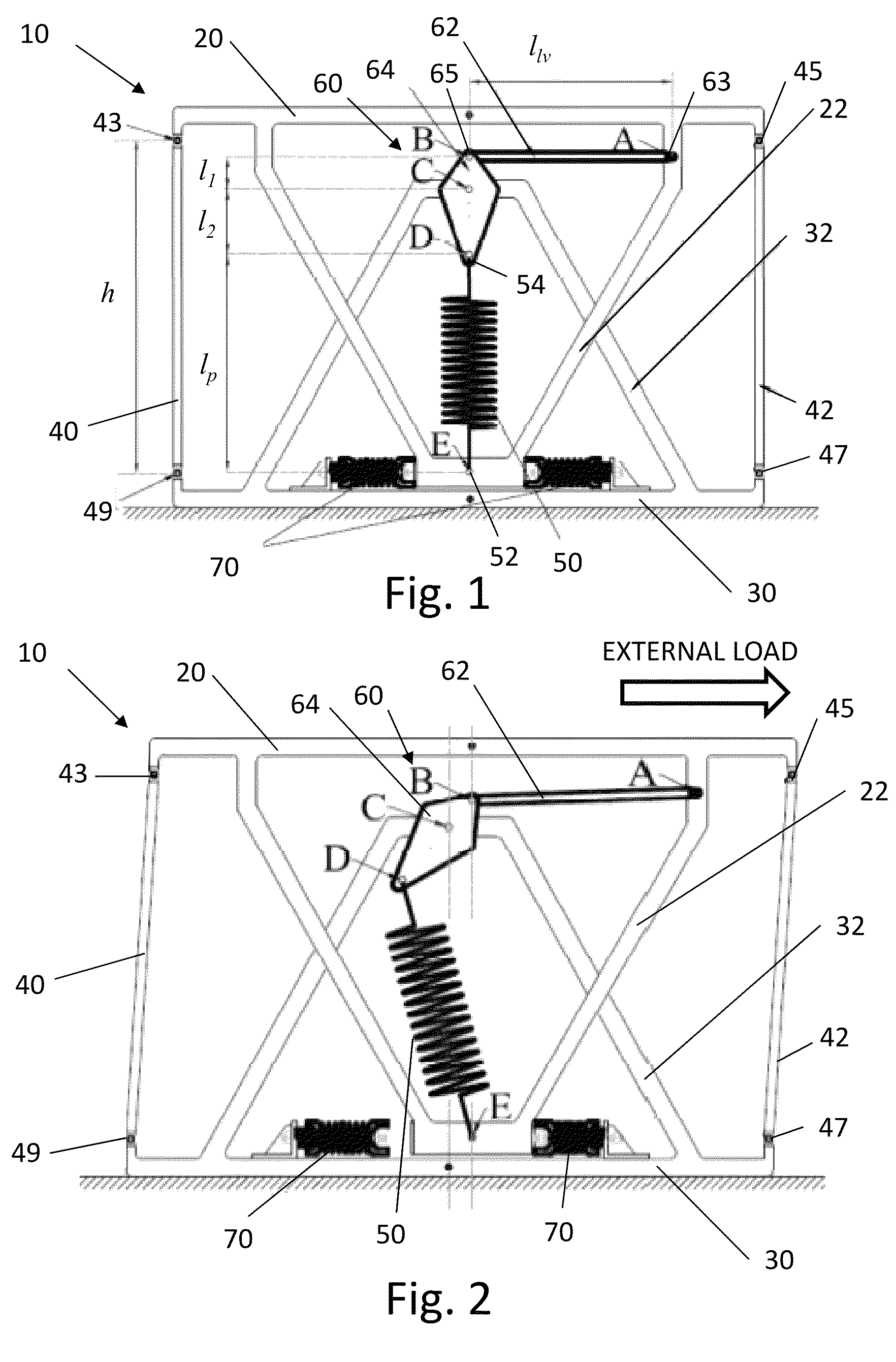Negative stiffness device and method
a negative stiffness and device technology, applied in the field of negative stiffness devices and methods, can solve the problems of physical very difficult and economic prohibitive confinement forces, limited application, and limited technology, and achieve the effect of negative stiffness and negative stiffness
- Summary
- Abstract
- Description
- Claims
- Application Information
AI Technical Summary
Benefits of technology
Problems solved by technology
Method used
Image
Examples
Embodiment Construction
[0048]A schematic of a device 10 according to an embodiment of the present invention is shown in FIG. 1, in a rest state, and shown in FIG. 2, in an engaged state. As shown in FIGS. 1 and 2, the device 10 includes a movement frame 20 and an anchor frame 30. The movement frame 20 has an extension portion 22, which extends in the direction of the anchor frame 30. The anchor frame 30 has an extension portion 32, which extends in the direction of the movement frame 20. In the embodiment shown in FIGS. 1 and 2, the extension portions 22, 32 are chevron braces, but other brace configurations could alternatively be used. Connecting members 40, 42 pivotably connect the anchor frame 30 to the movement frame 20, for example, via hinges 43, 45, 47, 49, such that movement frame 20 is laterally translatable relative to the anchor frame 30. The connecting members 40, 42 can limit the maximum vertical distance h between the movement frame 20 and the anchor frame 30. The embodiment shown in FIGS. 1...
PUM
 Login to View More
Login to View More Abstract
Description
Claims
Application Information
 Login to View More
Login to View More - R&D
- Intellectual Property
- Life Sciences
- Materials
- Tech Scout
- Unparalleled Data Quality
- Higher Quality Content
- 60% Fewer Hallucinations
Browse by: Latest US Patents, China's latest patents, Technical Efficacy Thesaurus, Application Domain, Technology Topic, Popular Technical Reports.
© 2025 PatSnap. All rights reserved.Legal|Privacy policy|Modern Slavery Act Transparency Statement|Sitemap|About US| Contact US: help@patsnap.com



